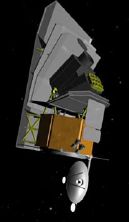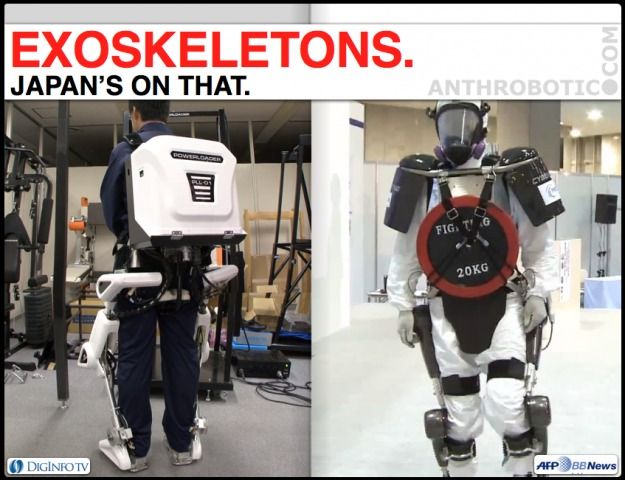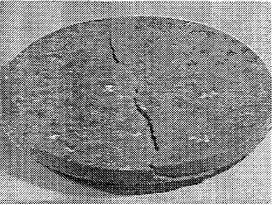6:00 pm Thursday, February 28th 2013
6:00 pm Social, 6:30 pm Program
Ball Aerospace Boulder Campus RA7 Conference Room
1600 Commerce St
Boulder, CO 80301
It will be good to see you there.
About the Talk:
 The inner solar system is populated with a half million asteroids larger than the one that struck Tunguska and yet we’ve identified and mapped only about one percent of these asteroids to date.
The inner solar system is populated with a half million asteroids larger than the one that struck Tunguska and yet we’ve identified and mapped only about one percent of these asteroids to date.
This month’s program will introduce the B612 Foundation and the first privately funded deep space mission–a space telescope designed to discover and track Near Earth Objects (NEO). This dynamic map of NEOs will provide the blueprint for future exploration of our Solar System, enabling potential astronaut missions and protection of the future of life on Earth.
The B612 Foundation is a California 501©(3) non-profit, private foundation dedicated to protecting the Earth from asteroid strikes. Its founding members Rusty Schweickart, Clark Chapman, Piet Hut, and Ed Lu established the foundation in 2002 with the goal of significantly altering the orbit of an asteroid in a controlled manner.
The B612 Foundation is working with Ball Aerospace, Boulder, CO, which is designing and building the Sentinel Infrared (IR) Space Telescope with the same expert team that developed the Spitzer and Kepler Space Telescopes. It will take approximately five years to complete development and testing to be ready for launch in 2017–2018.
About John Troeltzsch: 
John Troeltzsch is the Sentinel mission program manager for Ball Aerospace. Troeltzsch received his Bachelor of Science in Aerospace Engineering from the University of Colorado in 1983 and was immediately hired by Ball Aerospace. While working at Ball, Troeltzsch continued his studies at C.U. and received his Masters of Science in Aerospace Engineering in 1989. He has been a member of AIAA for over 30 years. During his 29 years at Ball Aerospace, Troeltzsch has worked on three of Hubble’s science instruments and in program management for the Spitzer Space Telescope. Following Spitzer’s launch in 2003, Troeltzsch joined Ball’s Kepler team and was named program manager in 2007. For the Kepler mission, Troeltzsch has managed the Ball team, including responsibility for cost, schedule, and performance requirements.
Link to pdf copy of invitation, http://www.iseti.us/pdf/AIAA-Sentinel-Feb.pdf
]]>
LEFT: Activelink Power Loader Light — RIGHT: The Latest HAL Suit
New Japanese Exoskeleton Pushing into HAL’s (potential) Marketshare
We of the robot/technology nerd demo are well aware of the non-ironically, ironically named HAL (Hybrid Assistive Limb) exoskeletal suit developed by Professor Yoshiyuki Sankai’s also totally not meta-ironically named Cyberdyne, Inc. Since its 2004 founding in Tsukuba City, just north of the Tokyo metro area, Cyberdyne has developed and iteratively refined the force-amplifying exoskeletal suit, and through the HAL FIT venture, they’ve also created a legs-only force resistance rehabilitation & training platform.
Joining HAL and a few similar projects here in Japan (notably Toyota’s & Honda’s) is Kansai based & Panasonic-owned Activelink’s new Power Loader Light (PLL). Activelink has developed various human force amplification systems since 2003, and this latest version of the Loader looks a lot less like its big brother the walking forklift, and a lot more like the bottom half & power pack of a HAL suit. Activelink intends to connect an upper body unit, and if successful, will become HAL’s only real competition here in Japan.
And for what?
Well, along with general human force amplification and/or rehab, this:
Fukushima Cleanup & Recovery: Heavy with High-Rads
As with Cyberdyne’s latest radiation shielded self-cooling HAL suit (the metallic gray model), Activelink’s PLL was ramped up after the 2011 Tohoku earthquake, tsunami, and resulting disaster at the Fukushima Daiichi Power Plant. Cleanup at the disaster area and responding to future incidents will of course require humans in heavy radiation suits with heavy tools possibly among heavy debris.While specific details on both exoskeletons’ recent upgrades and deployment timeline and/or capability are sparse, clearly the HAL suit and the PLL are conceptually ideal for the job. One assumes both will incorporate something like 20-30KG/45-65lbs. per limb of force amplification along with fully supporting the weight of the suit itself, and like HAL, PLL will have to work in a measure of radiological shielding and design consideration. So for now, HAL is clearly in the lead here.
Exoskeleton Competition Motivation Situation
Now, the HAL suit is widely known, widely deployed, and far and away the most successful of its kind ever made. No one else in Japan — in the world — is actually manufacturing and distributing powered exoskeletons at comparable scale. And that’s awesome and all due props to Professor Sankai and his team, but in taking stock of the HAL project’s 8 years of ongoing development, objectively one doesn’t see a whole lot of fundamental advancement. Sure, lifting capacity has increased incrementally and the size of the power source & overall bulk have decreased a bit. And yeah, no one else is doing what Cyberdyne’s doing, but that just might be the very reason why HAL seems to be treading water — and until recently, e.g., Activelink’s PLL, no one’s come along to offer up any kind of alternative.
Digressively Analogizing HAL with Japan & Vice-Versa Maybe
What follows is probably anecdotal, but probably right: See, Japanese economic and industrial institutions, while immensely powerful and historically cutting-edge, are also insular, proud — and weirdly — often glacially slow to innovate or embrace new technologies. With a lot of relatively happy workers doing excellent engineering with unmatched quality control and occasional leaps of innovation, Japan’s had a healthy electronics & general tech advantage for a good long time. Okay but now, thorough and integrated globalization has monkeywrenched the J-system, and while the Japanese might be just as good as ever, the world has caught up. For example, Korea’s big two — Samsung & LG — are now selling more TVs globally than all Japanese makers combined. Okay yeah, TVs ain’t robots, but across the board competition has arrived in a big way, and Japan’s tech & electronics industries are faltering and freaking out, and it’s illustrative of a wider socioeconomic issue. Cyberdyne, can you dig the parallel here?
Back to the Robot Stuff: Get on it, HAL/Japan — or Someone Else Will
A laundry list of robot/technology outlets, including Anthrobotic & IEEE, puzzled at how the first robots able to investigate at Fukushima were the American iRobot PackBots & Warriors. It really had to sting that in robot loving, automation saturated, theretofore 30% nuclear-powered Japan, there was no domestically produced device nimble enough and durable enough to investigate the facility without getting a radiation BBQ (the battle-tested PackBots & Warriors — no problem). So… ouch?
For now, HAL & Japan lead the exoskeletal pack, but with a quick look at Andra Keay’s survey piece over at Robohub it’s clear that HAL and the PLL are in a crowded and rapidly advancing field. So, if the U.S. or France or Germany or Korea or the Kiwis or whomever are first to produce a nimble, sufficiently powered, appropriately equipped, and ready-for-market & deployment human amplification platform, Japanese energy companies and government agencies and disaster response teams just might add those to cart instead. Without rapid and inspired development and improvement, HAL & Activelink, while perhaps remaining viable for Japan’s aging society industry, will be watching emergency response and cleanup teams at home with their handsome friend Asimo and his pet Aibo, wondering whatever happened to all the awesome, innovative, and world-leading Japanese robots.
It’ll all look so real on a 80-inch Samsung flat-panel HDTV.
Activelink Power Loader — Latest Model
Cyberdyne, Inc. HAL Suit — Latest Model
SOURCES & INFO & STUFF
[HAL SUIT UPGRADE FOR FUKUSHIMA — MEDGADGET]
[HAL RADIATION CONTAMINATION SUIT DETAILS — GIZMAG]
[ACTIVELINK POWER LOADER UPDATE — DIGINFO.TV]
[TOYOTA PERSONAL MOBILITY PROJECTS & ROBOT STUFF]
[HONDA STRIDE MANAGEMENT & ASSISTIVE DEVICE]
[iROBOT SENDING iROBOTS TO FUKUSHIMA — IEEE]
[MITSUBISHI NUCLEAR INSPECTION BOT]
For Fun:
[SKELETONICS — CRAZY HUMAN-POWERED PROJECT: JAPAN]
[KURATAS — EVEN CRAZIER PROJECT: JAPAN]
Note on Multimedia:
Main images were scraped from the above Diginfo.tv & AFPBBNEWS
YouTube videos, respectively. Because there just aren’t any decent stills
out there — what else is a pseudo-journalist of questionable competency to do?
This piece originally appeared at Anthrobotic.com on January 17, 2013.
]]>My “mantra” has always been WE CAN GO NOW. The solutions are crystal clear to anyone who takes a survey of the available technology. What blinds people is their unwillingness to accept the cost of making it happen.
There is no cheap.
Paul Gilster comments on his blog Centauri Dreams, concerning Radiation, Alzheimer’s Disease and Fermi;
“Neurological damage from human missions to deep space — and the study goes no further than the relatively close Mars — would obviously affect our planning and create serious payload constraints given the need for what might have to be massive shielding.”
Massive shielding.
This is the game changer. The showstopper. The sea change. The paradigm shift.
The cosmic ray gorilla. Whatever you want to call it, it is the reality that most of what we are familiar with concerning human space flight is not going to work in deep space.
Massive Shielding=Nuclear Propulsion=Bombs
M=N=B
We have to transport nuclear materials to the Moon where we can light off a nuclear propulsion system. The Moon is where the ice-derived Water to fill up a Massive radiation shield is to be found.
Massive Shield=Water=Lunar Base
M=W=L
Sequentially: L=W=M=N=B
So, first and last, we need an HLV to get to this Lunar Base (where the Water for the shield is) and we need to safely transport Nuclear material there (and safely assemble and light off the Bombs to push the shield around).
Radiation shielding is the first determining factor in spaceship design and this largely determines the entire development of space travel.
At the present time the primary players are associated with the DARPA funded 100-Year Starship Study, as Icarus Interstellar who is cross linked with The Tau Zero Foundation and Centauri Dreams is a team member of the 100YSS. I was surprised to find Jean-Luc Cambier on Tau Zero.
Gary Church recently put the final nail in the Icarus Interstellar‘s dreams to build a rocket ship for interstellar travel. In his post on Lifeboat, Cosmic Ray Gorilla Gary Church says “it is likely such a shield will massive over a thousand tons”. Was he suggesting that the new cost of an interstellar rocket ship is not 3.4x World GDP but 34x or 340x World GDP? Oops!
Let us look at the record. Richard Obousy of Icarus Interstellar and Eric Davis of Institute for Advanced Studies claimed that it was possible, using string theories to travel at not just c, the velocity of light but at 1E32c, or c multiplied by a 1 followed by 32 zeros. However, Lorentz-FitzGerald transformations show that anything with mass cannot travel faster than the velocity of light. Note that Lorentz-FitzGerald is an empirical observation which was incorporated into Einstein’s Special Theory of Relativity.
It is quite clear that you can use string theories to say anything you want. I used the term ‘mathematical conjecture’.
In April 2008 the esteemed Michio Kaku said in his Space Show interview, that it would take several hundred years to do gravity modification. But Michio Kaku is a string theorist himself. And I might add down to Earth one at that, since his opinion contradicts Richard Obousy and Eric Davis.
Then there is George Hathaway also with the Tau Zero Foundation who could not reproduce Podkletnov’s experiments, even when he was in communication with Podkletnov.
And this is the one group our astronaut Mae Jemison, leader of the 100YSS effort, has teamed up with? My sincerest condolences to you Mae Jemison. Sincerest condolences.
For the answer to the second question, you have to look within yourselves.
—————————————————————————————————
Benjamin T Solomon is the author & principal investigator of the 12-year study into the theoretical & technological feasibility of gravitation modification, titled An Introduction to Gravity Modification, to achieve interstellar travel in our lifetimes. For more information visit iSETI LLC, Interstellar Space Exploration Technology Initiative.
Solomon is inviting all serious participants to his LinkedIn Group Interstellar Travel & Gravity Modification.
]]>I see the problem as one of self similarity; trying to go cheap being the downfall of all these schemes to work around human physiology.
When I first became interested in space travel several years ago I would comment on a couple blogs and find myself constantly arguing with private space proponents- and saying over and over again, “there is no cheap.” I was finally excommunicated from that bunch and banned from posting. They would start calling me an idiot and other insults and when I tried to return the favor the moderator would block my replies. The person who runs those two sites works for a firm promoting space tourism- go figure.
The problem is that while the aerospace industry made some money off the space program as an outgrowth of the military industrial complex, it soon became clear that spaceships are hard money- they have to work. The example of this is the outrage over the Apollo 1 fire and subsequent oversight of contractors- a practice which disappeared after Apollo and resulted in the Space Shuttle being such a poor design. A portion of the shuttle development money reportedly went under the table into the B-1 bomber program; how much we will never know. Swing wings are not easy to build which is why you do not see it anymore; cuts into profits.
The easy money of cold war toys has since defeated any move by industry to take up the cause of space exploration. No easy money in spaceships. People who want something for nothing rarely end up with anything worth anything. Trying to find cheap ways around furnishing explorers with the physcial conditions human beings evolved in is going to fail. On the other hand if we start with a baseline of one gravity and Earth level radiation we are bound to succeed.
The engineering solutions to this baseline requirement are as I have already detailed; a tether for gravity and a massive moonwater shield with bomb propulsion. That is EXACTLY how to do it and I do not see any one else offering anything else that will work- just waffling and spewing about R&D.
We have been doing R&D for over half a century. It is a reason to go that is supposedly lacking.
When that crater in Mexico was discovered in 1980 the cold war was reaching it’s crescendo and the massive extinction it caused was overshadowed by the threat of nuclear weapons. Impact defense is still the only path to all that DOD money for a Moon base.
]]>About two weeks ago, I remembered, that Josh had said that he would provide some information on the second group that had failed to reproduce Podkletnov’s work. I sent him an email, and was very pleased to hear back from him and that the group’s finding had been published under the title “Gravity Modification by High-Temperature Semiconductors”. The authors were C. Woods, S. Cooke, J. Helme & C. Caldwell. Their paper was published in the 37th AIAA/ASME/SAE/ASEE Joint Propulsion Conference and Exhibit, 8–11 July 2001, Salt Lake City, Utah. I bought a copy for the AIAA archives, and read it, reread it, and reread it.
Then I found a third team they published their lack of findings “Gravity Modification Experiments Using a Rotating Superconducting Disk and Radio Frequency Fields”. The authors were G. Hathaway, B. Cleveland and Y. Bao. Published in Physica C, 2003.
Both papers focused on attempting to build a correct superconducting disc. At least Wood et al said “the tests have not fulfilled the specified conditions for a gravity effect”. The single most difficult thing to do was to build a bilayered superconducting disc. Woods et al tried very hard to do so. Reading through Hathaway et all paper suggest that they too had similar difficulties. Photo shows a sample disc from Woods’ team. Observe the crack in the middle.
Further, Woods’ team was able to rotate their disc to 5,000 rpm. Hathaway’s team reports a rotational speed of between 400–800 rpm, a far cry from Podkletnov’s 5,000 rpm. This suggests that there were other problems in Hathaway’s disc not reported in their paper. With 400–800 rpm, if Hathaway were to observe a significant weight change it would have been less than the repeatable experimental sensitivity of 0.5mg!
Here are some quotes from Hathaway et al’s original paper “As a result of these tests it was decided that either the coil designs were inefficient at producing …”, “the rapid induction heating at room temperature cracked the non-superconducting disk into two pieces within 3 s”, “Further tests are needed to determine the proper test set-up required to detect the reverse Josephson junction effect in multi-grain bulk YBCO superconductors”.
It is quite obvious from reading both papers that neither team were able to faithfully reproduce Podkletnov’s work, and it is no wonder that at least Woods et al team stated “the tests have not fulfilled the specified conditions for a gravity effect”. This statement definitely applies to Hathaway et al’s research. There is more to critic both investigations, but .… this should be enough.
Now, for the final surprise. The first team I had mentioned earlier. Ning Li led the first team comprised of members from NASA and University of Huntsville, AL. It was revealed in conversations with a former team member that Ning Li’s team was disbanded before they could build the superconducting discs required to investigate Podkletnov’s claims. Wow!
If you think about it, all these “investigations” just showed that nobody in the US was capable of faithfully reproducing Podkletnov’s experiments to even disprove it.
What a big surprise! A null result is not a disproof.
—————————————————————————————————
Benjamin T Solomon is the author & principal investigator of the 12-year study into the theoretical & technological feasibility of gravitation modification, titled An Introduction to Gravity Modification, to achieve interstellar travel in our lifetimes. For more information visit iSETI LLC, Interstellar Space Exploration Technology Initiative.
Solomon is inviting all serious participants to his LinkedIn Group Interstellar Travel & Gravity Modification.
]]>Excerpt: “Galactic cosmic radiation poses a significant threat to future astronauts,” said M. Kerry O’Banion, M.D., Ph.D., a professor in the University of Rochester Medical Center (URMC) Department of Neurobiology and Anatomy and the senior author of the study. “The possibility that radiation exposure in space may give rise to health problems such as cancer has long been recognized. However, this study shows for the first time that exposure to radiation levels equivalent to a mission to Mars could produce cognitive problems and speed up changes in the brain that are associated with Alzheimer’s disease.”
It appears when Eugene Parker wrote “Shielding Space Travelers” in 2006 he was right- and all the private space sycophants claiming radiation mitigation is trivial are wrong.
Only a massive water shield a minimum of 14 feet thick and massing 400 tons for a small capsule can shield human beings in deep space on long duration missions. And since a small capsule will not have sufficient space to keep a crew psychologically healthy on a multi-year journey it is likely such a shield will massive over a thousand tons.
This mass may seem to make Human Space Flight Beyond Earth and Lunar Orbit (HSF-BELO) impractical but in fact it is not an obstacle but an enabler. Nuclear Pulse Propulsion using bombs to push a spaceship to the outer solar sytem becomes more efficient the larger the ship and this amount of water is useful in a closed loop life support system.
Lighting off bombs in the Earth’s magnetosphere is not acceptable and this points to the Moon as the obvious place to launch nuclear missions and also to acquire the water for radiation shielding. The Space Launch System (SLS) is the human-rated Heavy Lift Vehicle (HLV) with a powerful escape system that can safely transport the required fissionables to the Moon.
2013 may be the year of the comet and the year of the spaceship if the two goals of protecting the planet from impacts and establishing off world colonies are finally recognized as vital to the survival of humankind.
]]>May the pockets of your jeans become a magnet for $100 bills.
May love stick to your face like Vaseline and may laughter assault your lips!
May happiness slap you across the face and may your tears be that of joy
May the problems you had, forget your home address!
In simple words .….….……May 2013 be EXTRAORDINARY … the best year of your life!!! Simply the best New Year greeting anyone has sent to me. This was from Robert White of Extraordinary People.
This morning I checked the Lifeboat stats for 2012. When I started blogging for Lifeboat at the end of July, we ended July 2012 with 42,771 unique visitors. We closed 2012 with 90,920 unique visitors for the month December. Wow! Our blogging has become more relevant, and more thought provoking. As a community of bloggers (with the exception of one) we have moved away from the 3 Cs of pseudoscience. Clouding the field. Confusing the public’s perception. Chasing away talent.
How did we do this? By backing up our discussions with hard facts, robust debate and real numbers. From years if not decades of investigation in our field of research. By speaking from our own unique experience. By sharing that unique experience with our readers.
Once again, may 2013 be an extraordinary year.
—————————————————————————————————
Benjamin T Solomon is the author & principal investigator of the 12-year study into the theoretical & technological feasibility of gravitation modification, titled An Introduction to Gravity Modification, to achieve interstellar travel in our lifetimes. For more information visit iSETI LLC, Interstellar Space Exploration Technology Initiative.
Solomon is inviting all serious participants to his LinkedIn Group Interstellar Travel & Gravity Modification.
]]>
